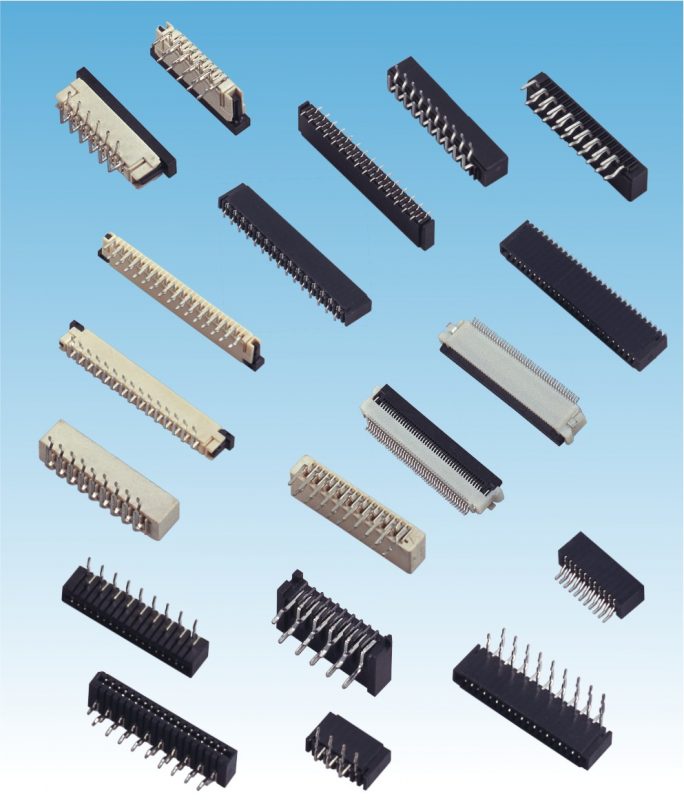Taiwan has the advantages of excellent geographical location, sound industrial settlement, excellent research and development capabilities, and sound infrastructure. It is the best place for foreign businessmen and Taiwanese businessmen to set up regional operation centers. In terms of the connector industry, in 2013, Taiwan connector manufacturers such as Foxlink, ACON, LOTES, JPC, Aces, Singatron, The revenues of P-two, CviLux and CHANT SINCERE exceeded NT$2 billion, including first-line operators such as ALL TOP TECHNOLOGY and PLASTRON PRECISION. Revenue also exceeded NT$1 billion. Under the gradual normalization of cross-strait economic and trade, the business opportunities of China’s 12th Five-Year Plan, and the gradual formation of the IT industry in the Greater West, the future of Taiwan’s connector industry is expected to flourish.
First, the seven reasons why Taiwan’s connector industry attracts investment
1. More than 300 manufacturers in Taiwan have obvious clustering effects.
2. The main connector importer in mainland China.
3. The global connector output value is over 10%, Hon Hai is ranked in the top ten, and Foxlink, SUYIN, LOTES, Aces, SINGATRON, etc. Crowd into the global ranking Top30~Top60.
4. Taiwan is the gathering place for the assembly of OEMs for global electronic system products.
5. Taiwan has globally renowned brand manufacturers such as notebook computers and mobile phones.
6. Hsinchu Science Park is world famous.
7. The most complete country upstream and downstream of the global connector.
Second, Taiwan connector industry structure and current situation analysis
China’s connector industry is dominated by small and medium-sized enterprises. Therefore, the number of households is large. According to the statistical results of 2012, there are about 300 to 400. In 2013, the output value of Taiwan’s connector industry reached NT$150.3 billion, accounting for 17.18% of the output value of China’s electronic components industry. .
Third, China has long been the largest exporter of connectors in China.
In 2012, the export value of China’s connectors was NT$13.57 billion (see Table 2). Since China has become a major assembly center for 3C products in China, under the continuous effect of investment-driven trade effects, the local area has already become the notebook board for China. Board to Board, Wire to Board, FPC, FFC, memory card connector is the largest exporter. In the future, as the notebook manufacturers expand the Chengdu manufacturing base in Chongqing, Chongqing, it is foreseeable. The proportion of exports will be further expanded, while the exports to advanced countries will be ranked in the top three in the United States, Japan and Germany. The United States mainly uses communications applications, Japan uses digital home appliances, and Germany uses automotive connectors.
Fourth, the introduction of important manufacturers in Taiwan
Table 3 below selects the list of important medium-sized/high-quality manufacturers in China’s connector industry. On the whole, it lists companies such as Foxlink, LOTES, ACON, and Aces. In 2009, the industry has squeezed into the top 80 global players, and the 2013 revenue ranking is also the top five companies.
V. Analysis of Taiwan Connector Industry Advantages and Opportunities
The main advantages of China’s connector industry are five: First, with the same text in mainland China, the same species, people are not close, the soil is close. Second, the distance is close, customer service response time is fast. Third, the product price is lower than that of Europe and America, the performance is higher than that of China and South Korea, and it has high cost performance.
Sixth, the proportion of Taiwan’s global Notebook PC OEM is 90%.
Created a number of leading manufacturers of notebook connectors in China. V. The company’s operation and management efficiency is high, the level of automated production is high, and the quality of employees is good.
The opportunity aspect can be summarized as the following four points; First, the post-ECFA period, the political atmosphere of cross-strait political and business is good. Second, the rapid rise of 3C brands such as Lenovo, ZTE, Huawei, Hisense and TCL in mainland China has brought many product introduction opportunities to domestic connector manufacturers. Third, China’s national policy actively supports telecommunications, green energy, automotive, and medical industries, driving the next wave of emerging market demand for domestic connectors outside of 3C applications. Fourth, in response to customer demand, the West has entered the Sichuan layout and integrated into the local emerging supply chain to achieve greater potential market opportunities.



 繁中
繁中